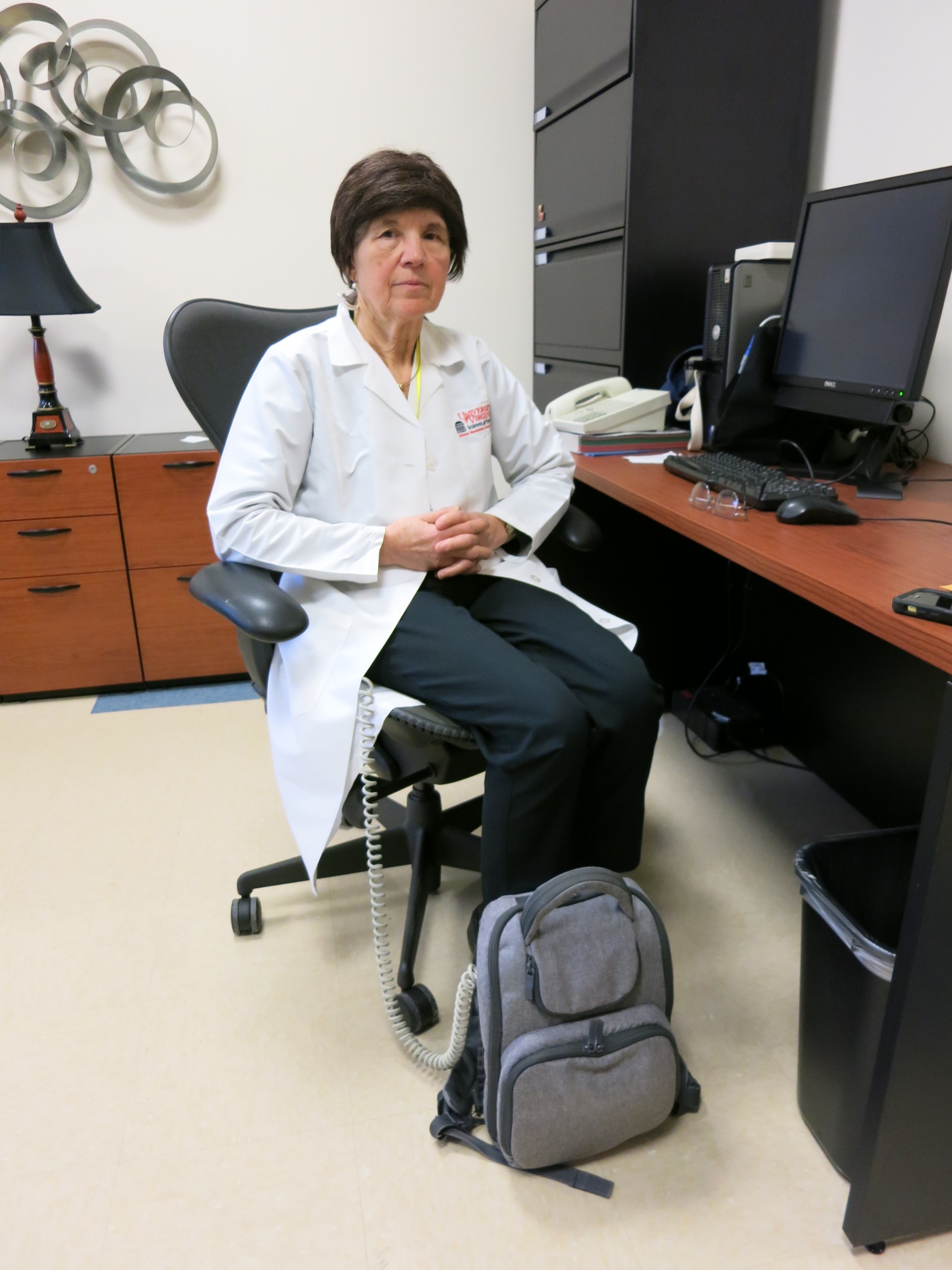A wearable device that emits low-level electrical fields can slow the progression of glioblastoma, the deadliest form of brain cancer, and extend patients’ lifespans, a major clinical trial at the University of Virginia School of Medicine and more than 80 other institutions has found.
Dr. David Schiff of the U.Va. Department of Neurology said the results of the trial have come as a “real shocker to the field,” noting that glioblastoma is notoriously difficult to treat. “This is a tumor type that it’s been very hard to make real progress against. From the 1960s to the present, we haven’t improved the average survival by more than a few months – less than a handful of months. So anybody who’s been in the field for a while has seen a lot of bright ideas fail,” he said. “But this trial in newly diagnosed disease is a different kettle of fish. Because this trial clearly shows an improvement both in time until the tumor starts growing but more importantly in overall survival. And if you can make a difference in overall survival, you’re really doing something.”
Prolonged Survival
Median survival among the 210 newly diagnosed patients who wore the device was 19.6 months, more than three months longer than for the 105 patients who didn’t. (Both groups otherwise received the same treatment, including surgery and chemotherapy.) Forty-three percent of device wearers survived two years; only 29 percent of those who didn’t wear the device lived that long.
The device is worn like a skullcap, with electrode pads affixed to the shaved scalp. It is powered by a separate, portable battery attached by long wires. The cosmetic effect of the device was often a concern for patients who declined to participate in the trial, noted Schiff, the principal investigator at U.Va. “There are patients who love the idea that this isn’t chemotherapy, that it has minimal side effects, that it’s different,” he said. “But there are other patients who simply can’t tolerate the idea of shaving their head, putting electrode pads on their head and being hooked up to a battery about the size of a small laptop computer whenever they want to go out and about.”
One Participant’s Experience
Trial participant Violet Horst had no such concerns. Horst said she leaped at the opportunity to test the experimental device after being diagnosed with glioblastoma. “My feeling was that I have benefited so much from the research that has taken place up to this point that I feel strongly that it is now my responsibility to be a participant to advance the research so that others in the future will benefit,” she said.
The mother of two noted that the only side effects she noticed are itching of scalp under the arrays and some skin irritation in the same areas. “Other than that, it really has not interfered with what I want to do,” she said. “I do what I want to do, and I don’t let this interfere with my life.”
It’s important to note that the device, manufactured by Novocure, has not been approved for the treatment of newly diagnosed glioblastomas and is not yet available as a treatment. It is, however, approved by the Food and Drug Administration for the treatment of recurrent glioblastomas.
Media Contact
Article Information
April 8, 2015
/content/wearable-device-slows-deadly-brain-tumors-clinical-trial-finds

